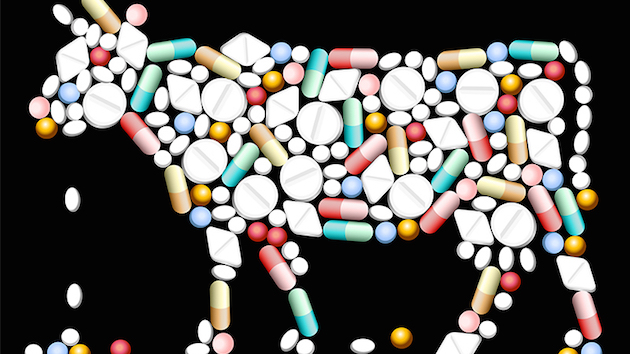
<p><a href="http://www.istockphoto.com/photo/medical-prescription-gm517107096-89330897?st=_p_antibiotics" target="_blank">Sezeryadigar</a>/iStock</p>
Pretend you found a mosquito in your bedroom. Would your first move be to kill the mosquito or to call in the exterminator to fumigate your whole house? Probably you’d start by killing the mosquito and, maybe, if his friends kept showing up, you’d try a few other things. If none of that worked, you’d eventually call in the big guns.
Doctors use the same approach when they treat infections with antibiotics: In general, they try to use the weakest possible drug that they know will be effective for a specific kind of infection. If that doesn’t work, they move on to the big guns—broad-spectrum antibiotics that can kill a wide range of bacteria.
But now, doctors are prescribing more broad-spectrum antibiotics than they ever have before—which leads researchers to speculate that first-line antibiotics aren’t working as well as they used to.
A new report from the Centers for Disease Control and Resistance tracked antibiotic prescriptions at 300 US hospitals. Between 2006 and 2012, overall antibiotic prescription rates remained the same. But prescriptions for carbapenems—a class of antibiotics used to treat infections that don’t respond to the usual drugs—jumped by an alarming 37 percent. Prescriptions of the extremely powerful antibiotic vancomycin—one of the only drugs effective against the scary skin infection, methicillin-resistant Staphylococcus aureus (MRSA)—increased by 27 percent.
Meanwhile, the use of fluoroquinolones, a very commonly prescribed class of antibiotics that isn’t nearly as strong as carbapenems or vancomycin—dropped by 20 percent.
The researchers think they can explain the rise in prescriptions of super-powerful antibiotic and the decline in use of less potent drugs: As bacteria develop resistance to the most commonly prescribed drugs, doctors have to call in the big guns more often. And if bacteria start developing resistance to the most powerful antibiotics, we’re really in trouble, as science journalist Maryn McKenna explained here.
One way to avoid that dire outcome is to make sure that doctors save the last-resort drugs for bacteria that other drugs can’t kill. The researchers note that “inappropriate antibiotic use increases the risk of antibiotic resistance and other adverse patient outcomes.”
But hospitals are not the only source of superbugs. As my colleague Tom Philpott has reported, an astonishing 80 percent of all US antibiotics go to the livestock industry, where meat producers regularly dose even healthy animals with them. This practice allows farmers to cram lots of animals into small spaces without sickening each other and makes them grow faster. It also spreads antibiotic-resistant genes to humans.
Although the FDA’s rules on livestock antibiotics are pretty permissive, in response to consumer concerns about superbugs, some meat companies are moving away from antibiotics on their own. Read Tom’s story of one company that chose to ditch the drugs here.
The good news: The FDA appears to be noticing the mounting evidence that our antibiotics are losing strength. Last week the agency signaled that it may soon limit how long farmers can use the drugs.













